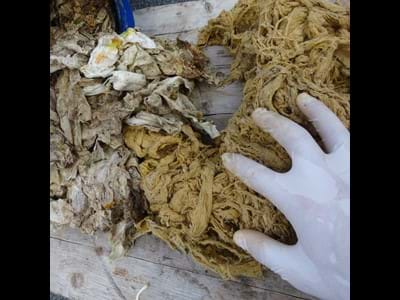That's gonna cost!
Other articles that do not belong in the sewerage system are ear sticks, hygiene articles such as panty liners, tampons, bandages, oils and fats, condoms, food leftovers, paints and medicines to
to name but a few, which we are increasingly finding in the form of residues, both in the pipelines and at the pumping stations and sewage treatment plants. From 2010 to 2019, screenings, as we call this waste, increased from 264.81 tonnes/year to 408.71 tonnes/year. This is almost doubled within 9 years. These costs, as well as the additional expenses for maintenance and servicing of the plants, are reflected in the wallets.
